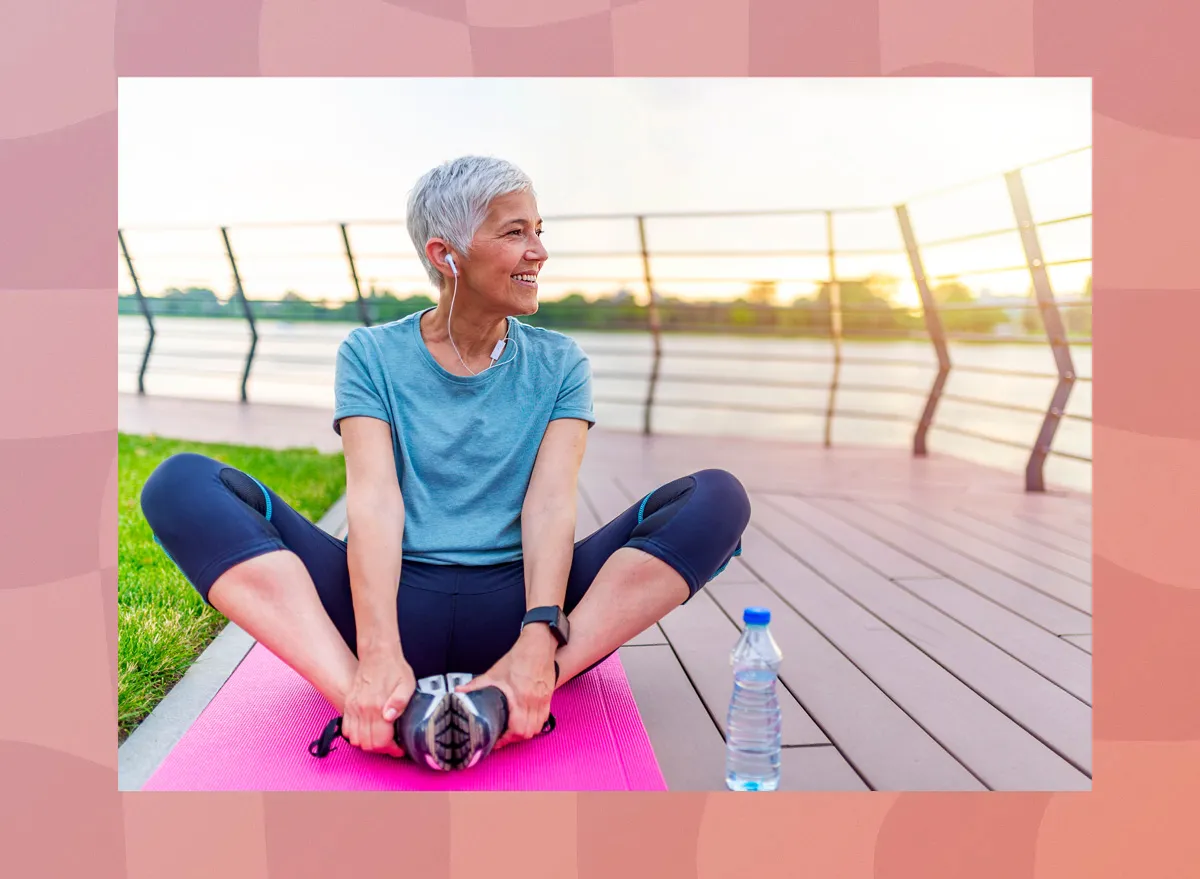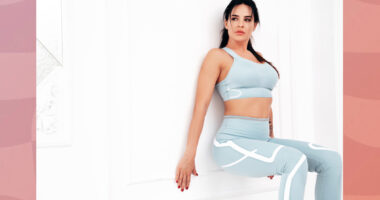Over 50? In my experience running my own programs for people in this age category, the most common mobility issues I see are knee pain and mobility, back and neck, hip mobility problems and shoulder pain. In fact I would say it’s unusual for people to not experience any of these at some point.
Regular stretching, whether it’s alone or part of group exercise like yoga and pilates, has incredible benefits to improving joint pain and mobility issues. Stretching after 50 improves your flexibility, reduces injury risk, eases joint pain, enhances your balance and posture, boosts your circulation, and helps relieve stress.
Here, I have listed some of my favorite stretches for the over 50s which you should hold for 30 seconds to 2 minutes and breath deeply as you perform them:
Seated forward fold on the floor
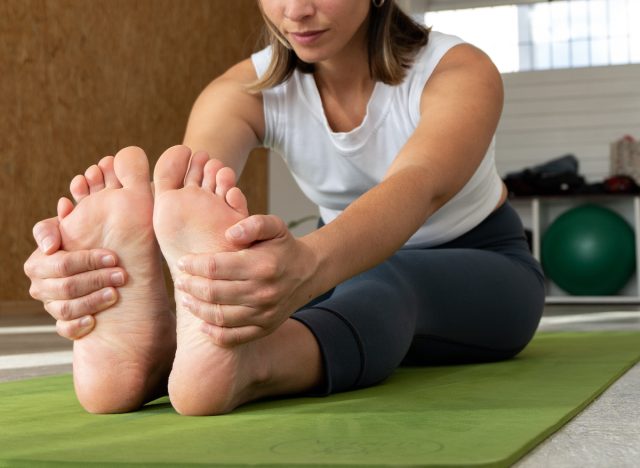
This a ‘posterior chain stretch’ for your back, hamstrings and glutes. This is a great stretch for over 50s which you can do on standing but I prefer to do it on the floor so you have full support.
Sit with legs extended, hinge at the hips, and reach toward your toes to stretch your hamstrings, glutes, and lower back. If you find this hard to do with your legs straight – do it with bent legs or I use a towel wrapped around your feet to hold onto as I have tight hamstrings.
Do this 2-3 times a week and you will notice a difference to your flexibility, spinal health, hamstring mobility, and overall muscle elasticity which typically decline with age but can be maintained through this stretch.
Avoid rounding your spine, don’t bounce and move slowly—never force the stretch to prevent injury.
Pigeon Pose
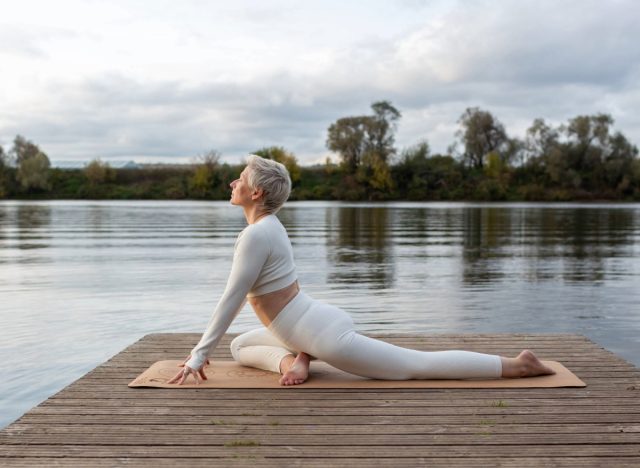
‘Pigeon Pose’ deeply stretches the hips, glutes, helps release tension from prolonged sitting, improves your hip mobility, and can ease lower back and sciatic pain.
Begin on your hands and knees, then lift your hips up and back into Downward-Facing Dog.
Slide your right knee toward your right wrist, angling your shin under your torso, and bring your right foot toward your left hip.
Slide your left leg straight behind you, keeping your hips square to the front.
Keep your hands on the mat or walk them forward to lower your torso over your right leg for a deeper stretch.
Beginners can use a cushion or block under your hip for support and stay upright rather than lowering your torso forward.
Perform this 2-3 times a week and you could include this after a workout.
Keep your hips square, using props for support if you need to, and avoid forcing the front leg into a 90-degree angle—common mistakes include twisting your hips, overstretching your knee, and ignoring pain signals.
Child’s pose
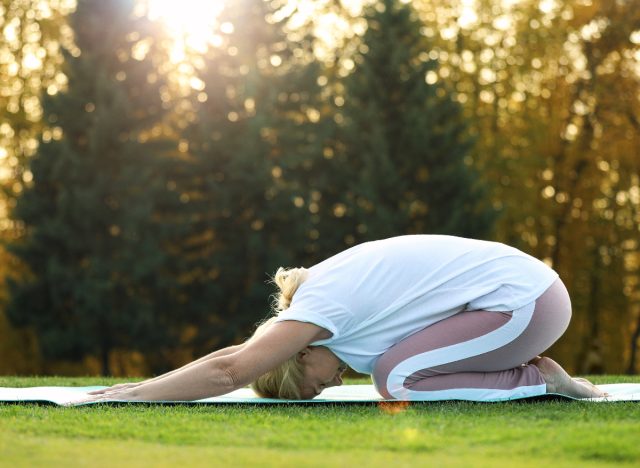
Back pain is one of the most common conditions in the over 50s and child’s pose is great for easing this.It gently elongates the spine, releases tension, and allows your lower back muscles to relax without strain.
Kneel on the floor, touch your big toes together, sit back on your heels, and stretch your arms forward while lowering your chest to the floor.
If you can manage to do this daily – it’s is great for back pain or do this as often as you can. If you are just starting out or find this stretch difficult, place a cushion under your hips or chest if needed.
Avoid putting pressure on your knees, use props if your hips don’t reach your heels, and don’t force the stretch—common mistakes include straining the neck and pushing too deep too fast.
Neck Stretch

Our necks can get very tight and sore due to sitting at computers for extended periods of time and scrolling on our mobile phones. Neck stretches improve your flexibility, reduce tension and headaches and ease stiffness from poor posture or screen time. This stretch also supports better alignment and blood flow.
Sit or stand tall, gently tilt your head to one side, bringing your ear toward your shoulder, and use the same-side hand to apply light pressure—hold, then switch sides. If this is your first time doing this, do the stretch without applying pressure with your hand at first.
Perform this stretch daily when you are having a break from screen time.
Avoid pulling with too much force, keep your movements slow and controlled, and don’t roll your head backward. Common mistakes include shrugging your shoulders or overstretching.
Quad stretch
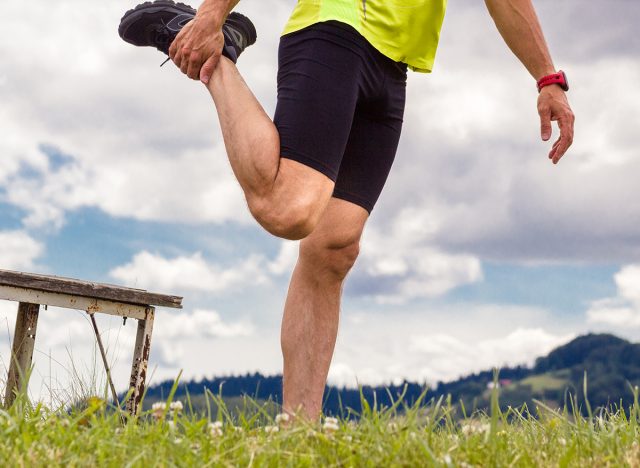
Stretching your quads is really great for improving your flexibility, relieving tightness from sitting or workouts and supporting knee and hip health. Knees really do benefit from keeping the muscle around them mobile which include your quads, hamstrings and calf muscles.
Stand tall, bend one knee to bring your heel toward your glutes, hold your ankle with the same-side hand, keep knees close together, and gently push your hips forward—hold, then switch sides. If you find it difficult to balance, hold on to a table or put one hand on the wall for support. You can also do this lying on your side.
You can do this 2-3 times a week especially after working out.
Avoid arching your lower back, keeping knees close together, and not yanking on the ankle.
Cat cow
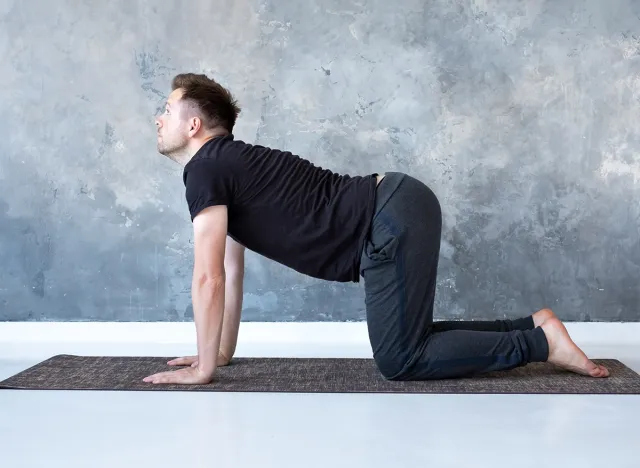
The cat cow is a great all round stretch stretch and is one of the best for people over 50—it promotes spinal flexibility, eases back stiffness, supports posture, and gently warms up the body without strain.
Start on your hands and knees, inhaling as you arch your back and lift your head (Cow), then exhaling as you round your spine and tuck your chin (Cat)—move slowly with each breath for 5–10 rounds. This exercise is easy enough for most people to do without modifying it.
Keep your wrists under your shoulders and knees under your hips, and avoid overextending your neck or lower back
This is a great way to warm up before a workout or even start your day. You can do this daily or as and when you workout.

